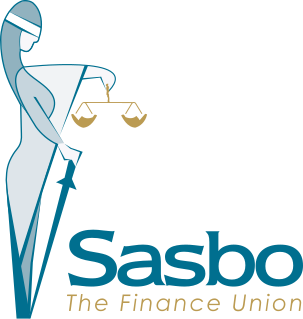Related Research Articles

The Australian Council of Trade Unions (ACTU), originally the Australasian Council of Trade Unions, is the largest peak body representing workers in Australia. It is a national trade union centre of 46 affiliated unions and eight trades and labour councils. The ACTU is a member of the International Trade Union Confederation.

The Australian Services Union is a trade union representing workers in a variety of industries.

SASBO – The Finance Union is a trade union in South Africa. It was founded in 1916 and has a membership of 70,000.

The Health & Other Services Personnel Trade Union of South Africa (HOSPERSA) is a trade union in South Africa.
The South African Trades Union Congress (TUC) was a national trade union federation in South Africa.
The Trade Union Council of South Africa (TUCSA) was national trade union federation in South Africa.
The Amalgamated Engineering Union of South Africa (AEU) was a trade union representing white manufacturing workers in South Africa.
The South African Confederation of Labour (SACOL) was a national trade union federation of white workers in South Africa.
The Underground Officials' Association (UOA) was a trade union representing supervisors in the mining industry in South Africa.
The Motor Industry Staff Association (MISA) is a trade union representing workers in the motor industry in South Africa.
The Salaried Staff Association (SALSTAFF) was a trade union representing railway workers in South Africa.
The Artisan Staff Association (ASA) was a trade union representing higher-paid technical railway workers in South Africa.
The South African Footplate Staff Association (SAFSA) was a trade union representing white railway workers in South Africa.
The Federal Consultative Council of South African Railways and Harbours Staff Associations (FCC) was a national trade union federation bringing together unions representing white railway workers in South Africa.
The South African Reduction Workers' Association (SARWA) was a trade union representing officials involved in processing mining ores in South Africa.
The South African Equity Workers' Association (SAEWA) is a general union in South Africa.
The Hospitality Industry and Allied Workers' Union (HIAWU) is a trade union representing workers in the hospitality sector in South Africa.
The South African Railways and Harbours Employees' Union (SAR&HEU) was a trade union representing lower-paid white workers on the railways in South Africa.
References
- ↑ Directory of Labor Organizations: Africa. Washington DC: United States Department of Labor. 1962. p. 37.49.
- ↑ "Functional federations and consultative councils" (PDF). South African Labour Bulletin. October 1985. Retrieved 24 March 2021.
- ↑ International Labour Organization (1993), Special Report of the Director-general on the Application of the Declaration Against Apartheid
- ↑ "New labour force wins support". Mail & Guardian. 27 March 1997. Retrieved 24 March 2021.
- ↑ "South Africa". Foreign Labour Trends. 1997.
- ↑ Von Holdt, Karl (May 1993). "In the number 2 spot" (PDF). South African Labour Journal. 17 (3). Retrieved 25 March 2021.